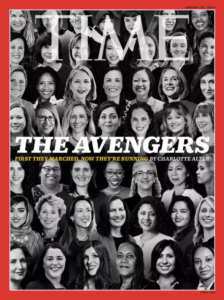Open any news website and you’ll most likely see a journalist declaring this midterm election year as the “year of the woman.” Many of these candidates chose to run following the election of President Donald Trump. Vox has said that “at least 185 women have captured a Democratic or Republican nomination for the House, surpassing the previous record of 167,” and, according to Global Citizen, “24 states will see women running for US Senate seats.” Certain women have attracted a lot of media attention like Alexandria Ocasio Cortez, Stacey Abrams, Amy McGrath, and Kim Pearl, due to their unexpected primary victories or their large campaigns that have brought them national attention. With an unprecedented amount of women running for government positions, calling this election season as the “year of the woman” is not an outrageous claim.

But has this been said before? This is not the first time there has been a “year of the woman” a time of empowering statistics and an increase in strong female figures in politics. This year shows a resemblance to 1992, which was also dubbed as the “year of the woman.” That year, women were motivated to run as a result of the Anita Hill hearing in 1991. Anita Hill had accused Supreme Court nominee Clarence Thomas of sexual harassment. Many women were inspired to run for office after seeing Ms. Hill testify in front of an all male Judiciary Committee. Many women felt that the way in which Ms. Hill was treated did not reflect their beliefs and and decided to take actions so their beliefs would be reflected in our “government of the people,” which, in fact, bore no resemblance to them at all. As a result, they ran for office. Again it was said that these were unprecedented numbers and statistics of women running but following those 1992 midterms there were six female senators, instead of two, and there were only 48 female congresswomen. While this was undoubtedly an improvement of female representation in our government that change does not seem worthy of the title “year of the woman.” So will this year be defined as only another small step towards equal representation in our government or as a true “year of the woman?” For it to live up to that title, women have to not only run, but actually win. The statistics of women running and winning a party nomination are not nearly as powerful as positive outcomes of their general elections. So on November 6th, we’ll see if a lot of women are able to actually win their general election.